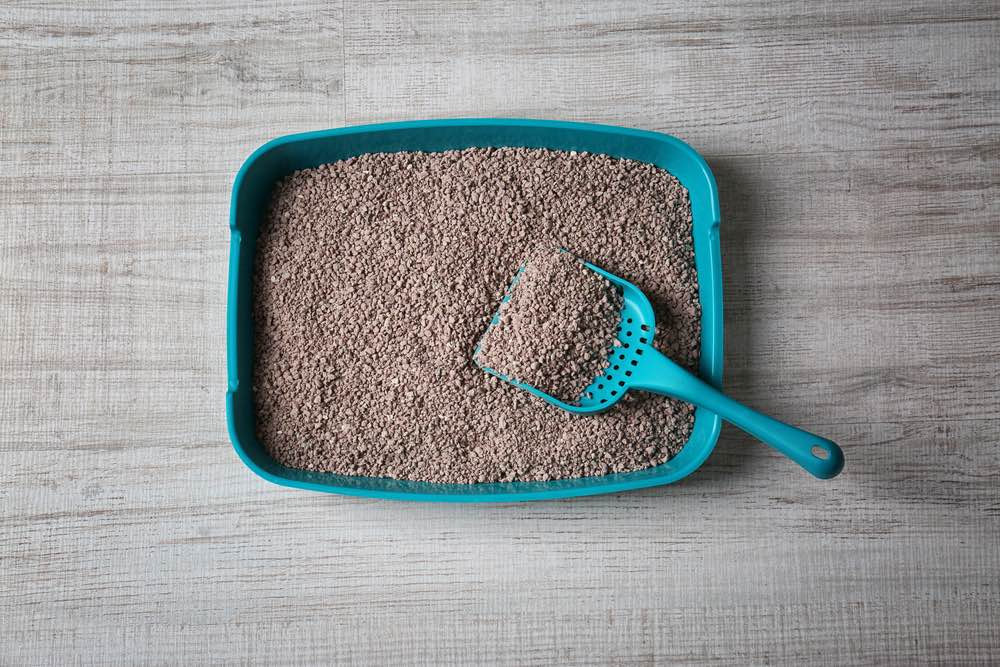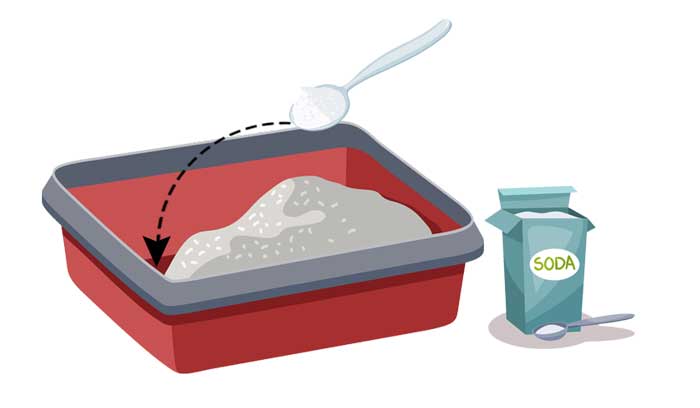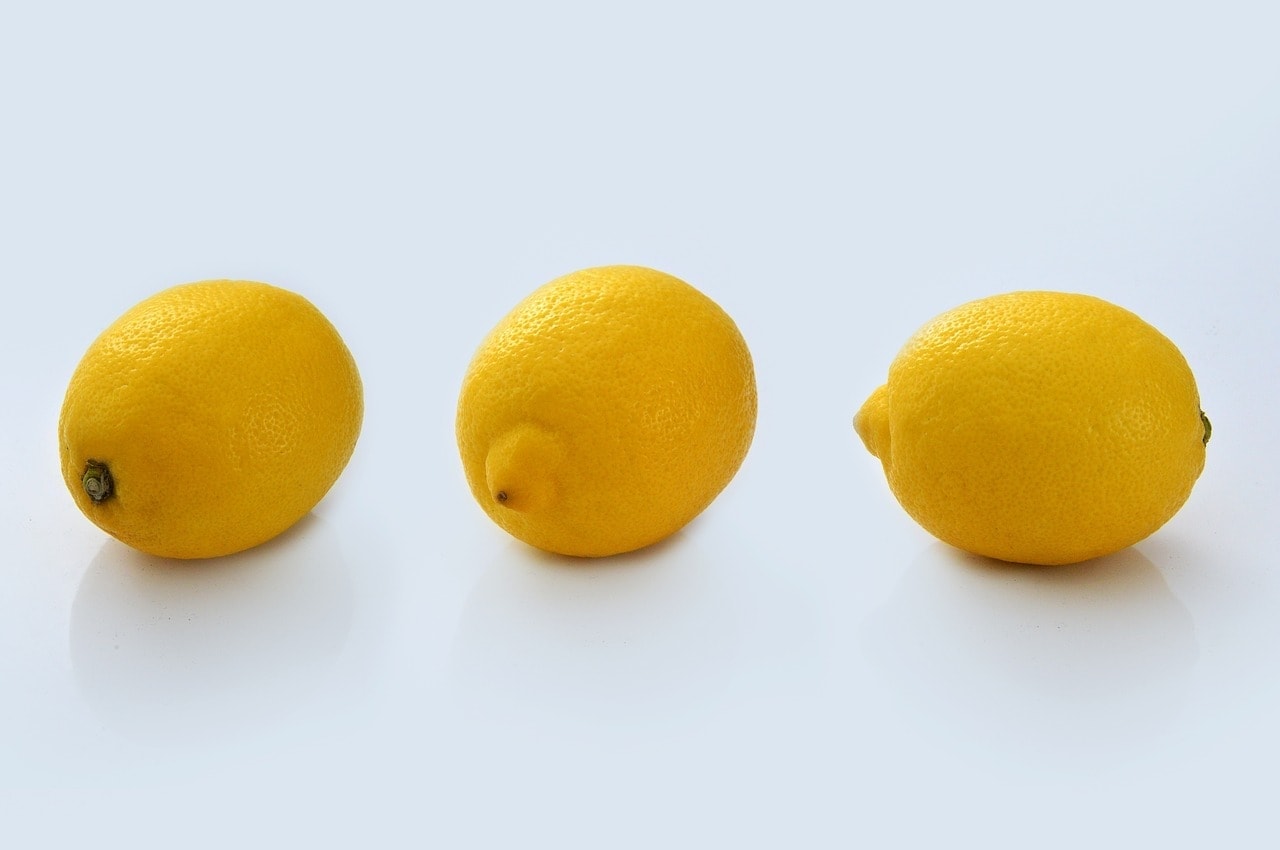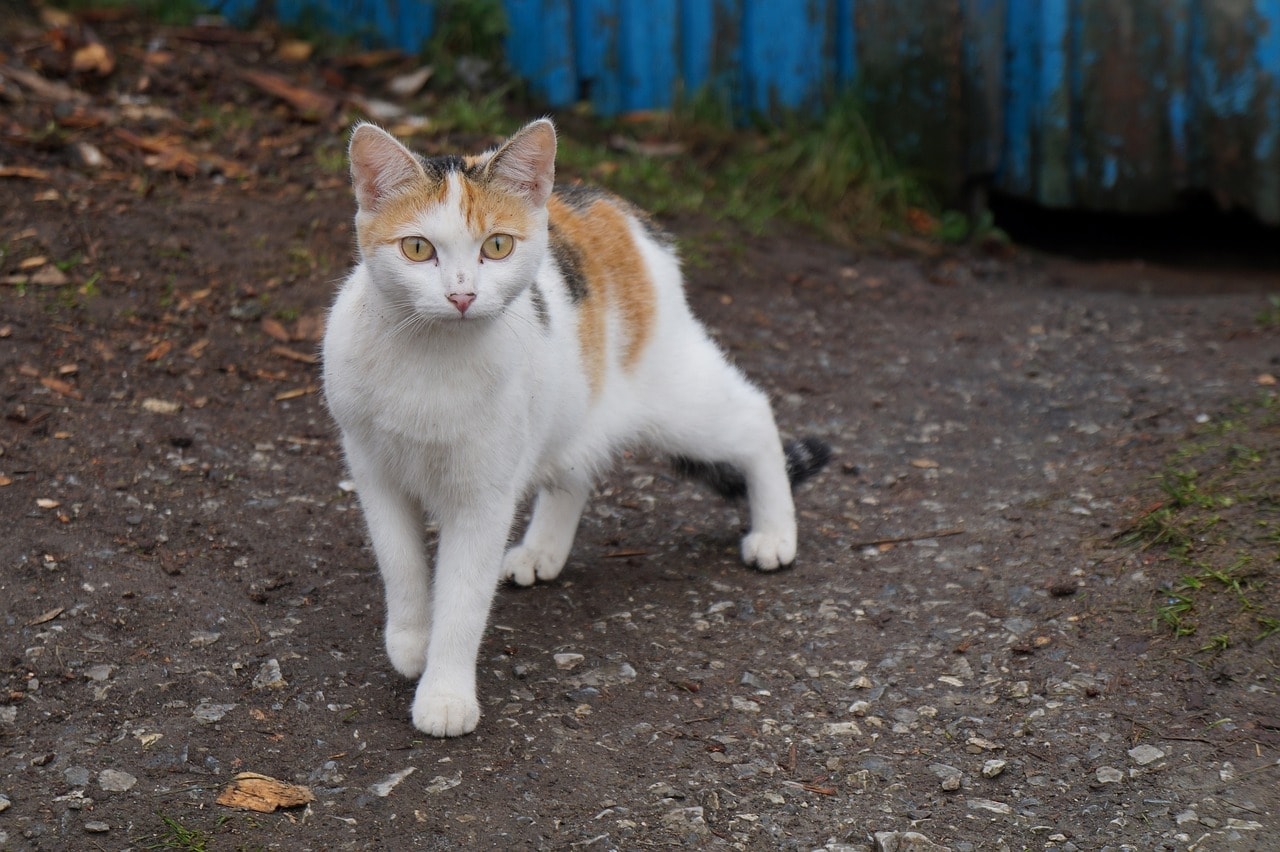On the market, there are so many chemical detergent products that help you clean cat litter containers quickly with little effort. But choosing a natural solution to clean kitty litter boxes has always been of interest to all cat owners. That’s why you need to read our detailed guide on how to clean a litter box with vinegar in this article.
How To Clean A Litter Box With Vinegar (Step-By-Step)
Step 1: Prepare suitable tools
- Durable gloves
- Medical mask
- Litter scooper
- Scrubbing brush & detergent
- Vinegar & baking soda
The litter box can be dirty, so you should wear protective gear. Get yourself a pair of thick gloves, they will protect you from harmful bacteria in the litter box and keep your hands clean. You will also need a mask to avoid breathing in dust and ammonia from cat urine.
Last but not least, you have to prepare vinegar. So what kind of vinegar can you use? We recommend white vinegar, but apple cider vinegar will work too.
Step 2: Empty the box and sanitize it with vinegar
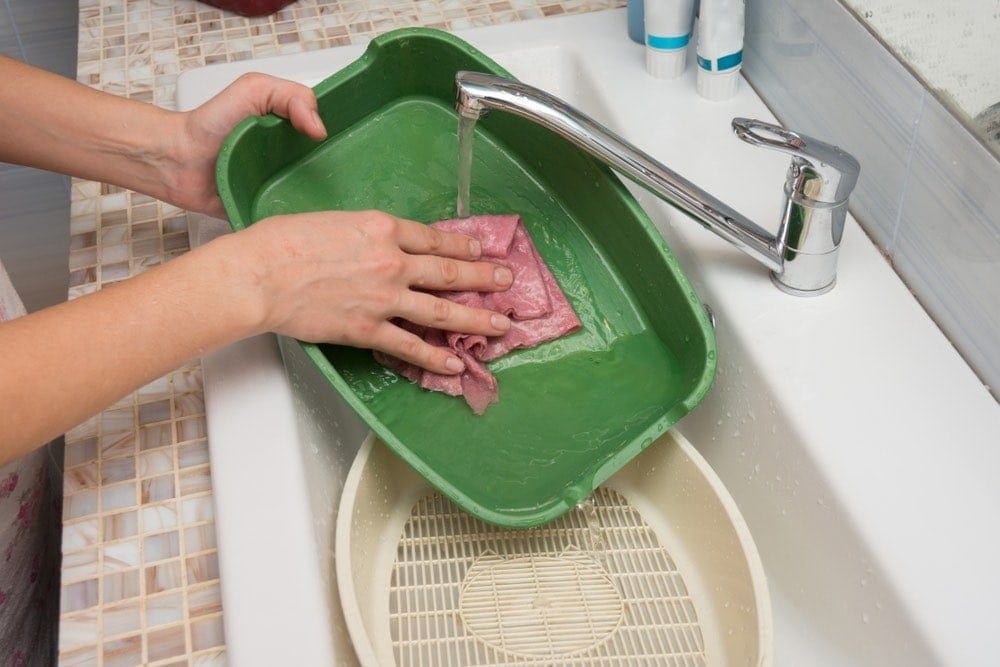
Lift up your litter box and gently dump all the cat litter into a garbage bag. Remember to go slow with it because dust particles can fly everywhere if you shake the box too hard.
Make sure you clean up all the dirt because some grains of sand may clot at the bottom of your kitty litter container. You can use a scoop to remove the particles. After pouring the litter cat all out of the box, rinse the box with boiling water. Now you can drop the white or apple cider vinegar in the litter box, then use a scrubbing brush to clean the litter container thoroughly.
Lastly, rinse the box again with cold water and let it dry naturally – or use paper towels to dry it quickly if you’re in a bit of a rush.
Step 3: Put in a deodorizing agent
There are various deodorizing agents available, the cheapest one must be baking soda. You can scatter a few spoonfuls of baking soda at the bottom of your kitty litter box before pouring sand in it.
If you do not have or want to use baking soda, don’t worry: charcoal briquettes and filters, or green tea are great alternatives. We don’t recommend products that have aromas because your cats may hate the smell of them and avoid the litterbox.
Step 4: Refill the litter box and let your cat go wild!
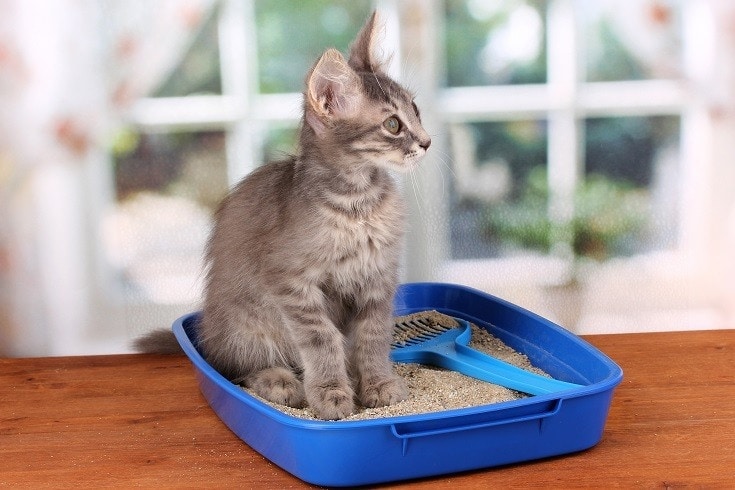
After it’s been cleaned it is ready to be refilled with fresh cat litter and your cat can get back to using it.
Some Interesting Reads:
Vinegar Drawbacks
In some cases, cats may be sensitive to the smell of vinegar. This means they would be irritated with vinegar if you haven’t rinsed the box carefully.
If you’re afraid that the excessive smell of vinegar will affect your cat, dilute the vinegar with a little water before brushing the container, and make sure you rinse the litter box thoroughly.
Mixing White Vinegar and Carbonated Water
Did you know that you can mix vinegar with carbonated water to clean a litter box? It seems strange but it’s very helpful.
Instead of mixing vinegar with warm water, you can substitute warm water with carbonated water. Because carbonated water is a natural ingredient that can kill harmful bacteria, blending it with vinegar will increase cleaning ability.
If You Don’t Have White Vinegar, Use Lemon Juice
If vinegar is not available in your house, lemon juice could be an alternative detergent because its acidity is similar to that of vinegar. Lemon juice is the same natural and safe as vinegar. It smells better than vinegar and is a perfect combination of carbonated water and lemon juice to clean out your kitty litter box.
FAQs
What is the best thing to use to clean a litter box?
We like to use white vinegar or apple cider vinegar because of the benefits we have shown you above. Besides, lemon juice and other detergents are some natural products favored by cat owners today.
Whatever you use to tidy a litter box, make sure that the ingredients you use are safe and do not cause irritation to your cat. It’s best to use products without a strong odor because cats don’t really like them.
Do cats like the smell of vinegar?
Unfortunately, the answer is no. Rarely does a cat like the smell of vinegar. And that’s the reason why you should rinse the litter box carefully and hang it until the odor of vinegar is gone.
Can you use bleach to clean a litter box?
Bleach can be considered a useful substance to completely clean the litter box and give the box a brand new look.
But using bleach to clean litter boxes can be harmful to your cat. The reason given is that when bleach combines with cat urine, it will produce toxic chlorine and chloramine vapors.
So, you should remove all cat urine first, then use bleach, and then rinse and clean the litter box again. Using bleach includes extra cleaning steps, which is why we prefer just using vinegar and water.
How often should the litter box be washed?
Cleaning a litter box is an important part of ensuring a clean and comfortable living environment for your pet.
Your cat will use the litter box several times a day to urinate and defecate. So using a scoop to remove pet waste twice a day is recommended. You should clean the litter box once a week. If you own a lot of cats, this should be done more often.
Last Words
Now you know how to clean a litter box with vinegar. Remember that your cat’s health comes first, so any litter box cleaning method needs to be done carefully.
Get down to work! Read our instructions carefully and if you have any questions, let us know by leaving comments below. We’d love to hear from you!
You might also like:
Featured image credit: Africa Studio, Shutterstock

